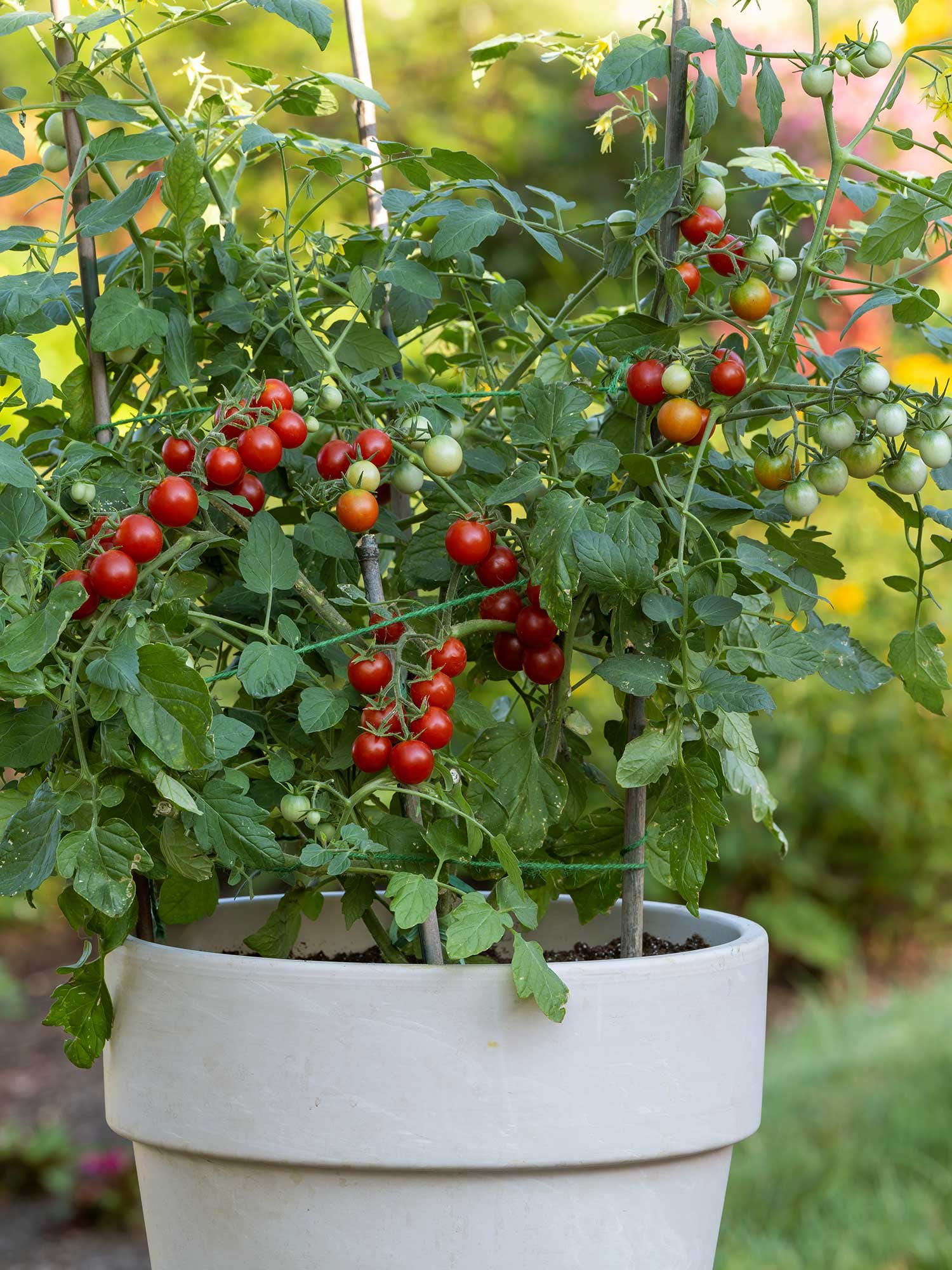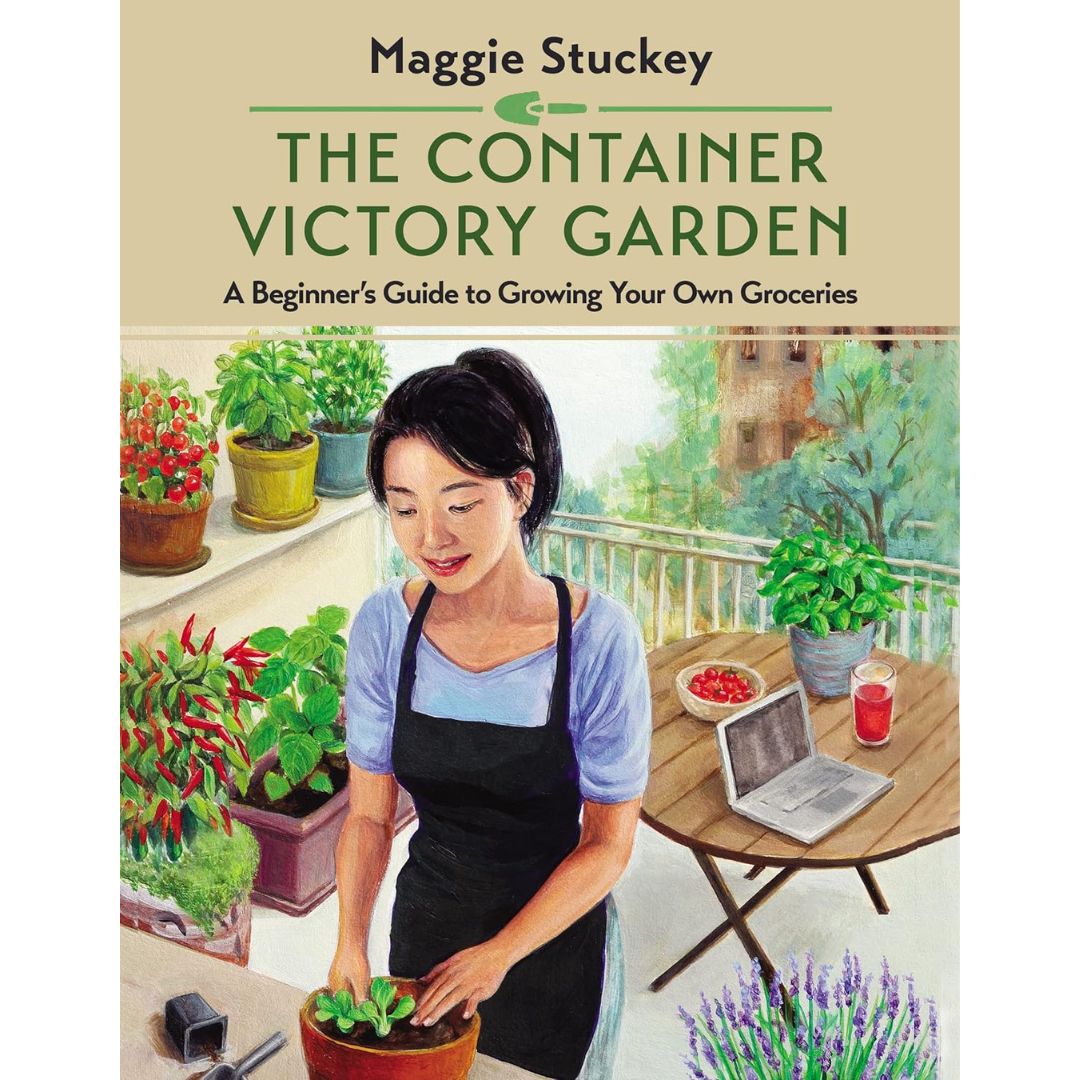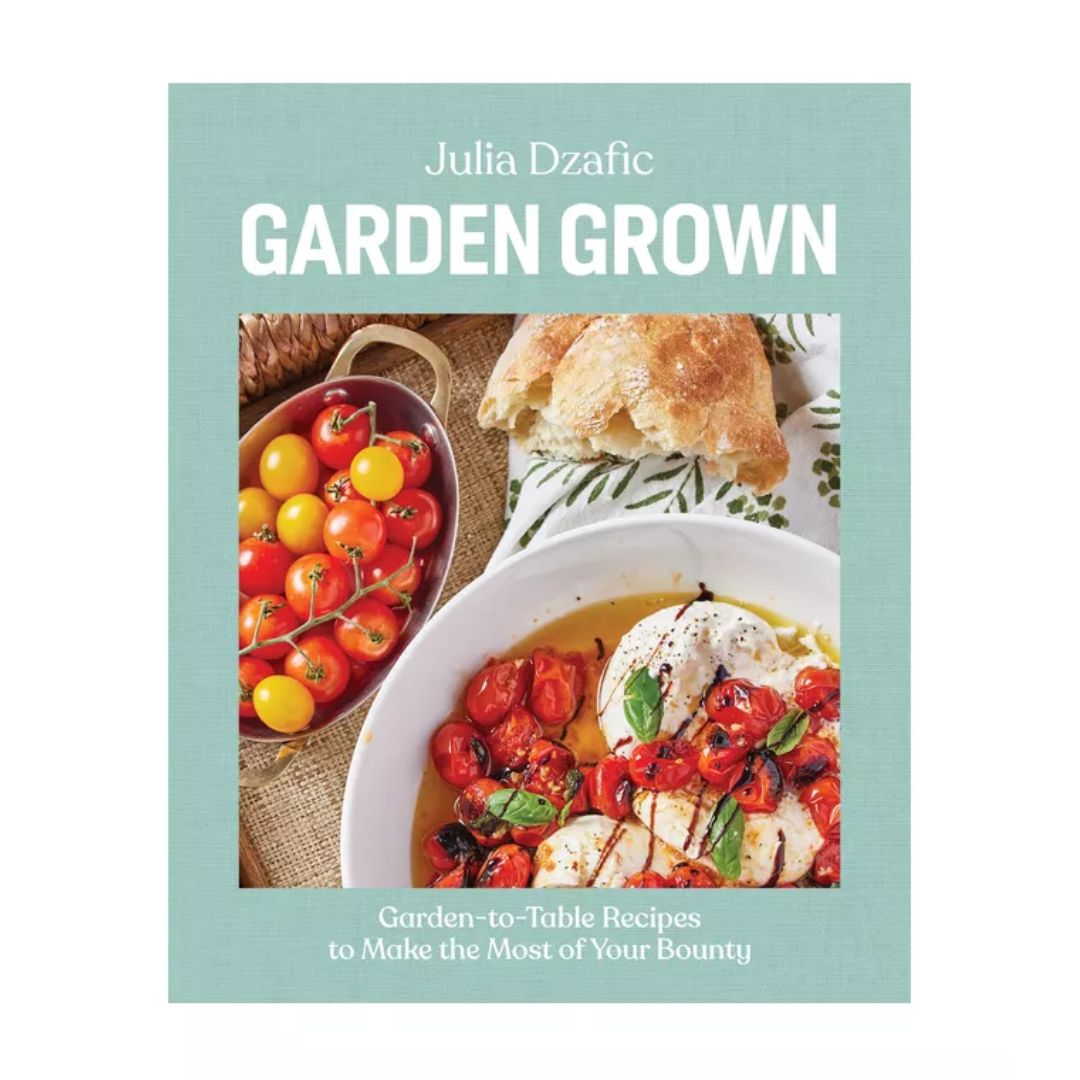How Far Apart to Plant Tomatoes — The Golden Rule Gardeners Swear by for Better Crops
Temperature isn't the only important growth factor for tomatoes. Spacing your plants incorrectly can affect their performance too
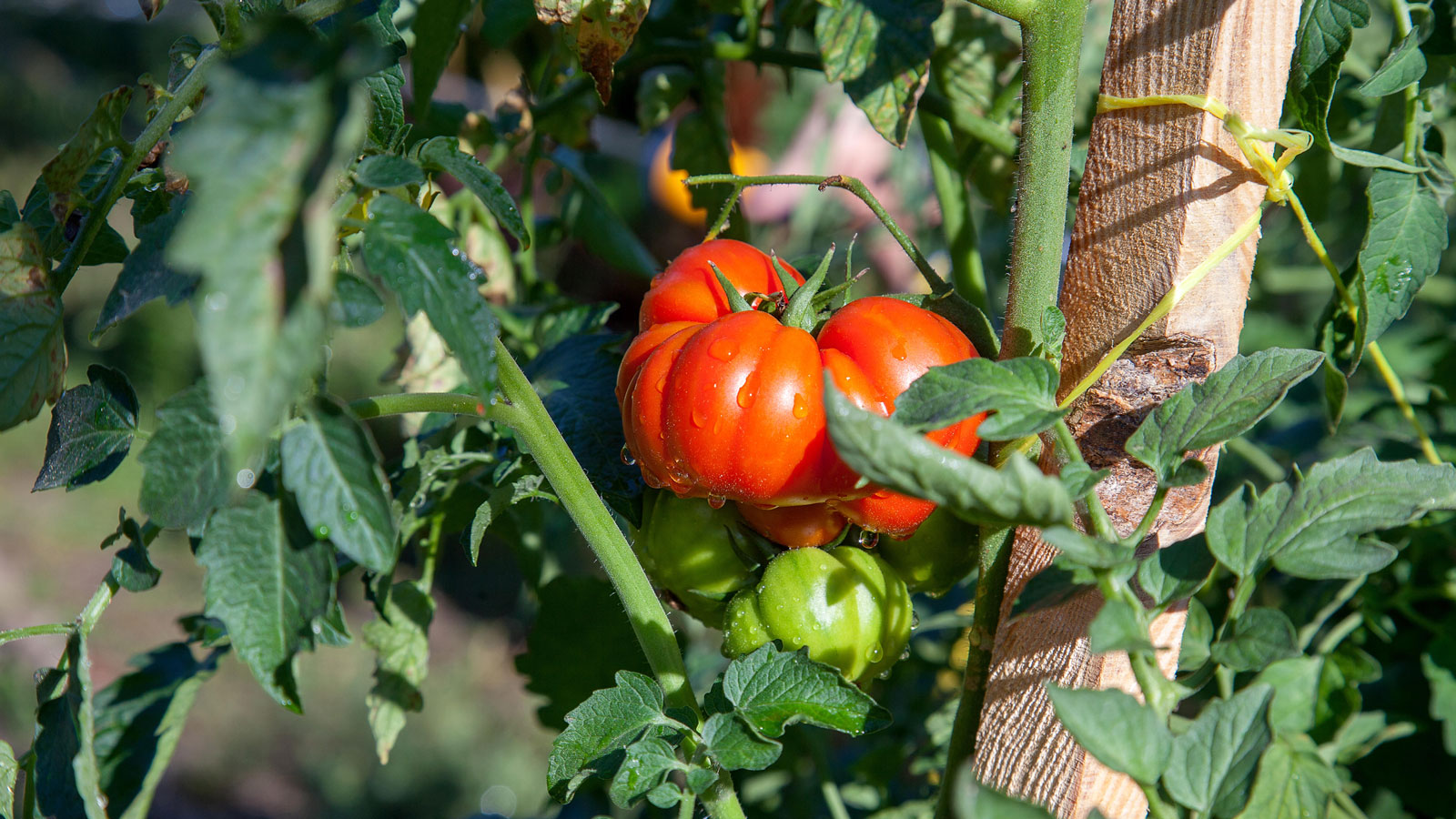
Whether you are a balcony gardener growing in pots or are lucky enough to have a decent sized vegetable patch there is always one crop everyone loves to grow and that's tomatoes. They are a real favorite and when they're ripe nothing beats their gorgeous sunbaked flavor as you pick them fresh from the vine.
We know that tomatoes need heat, light, air, water and nutrients to thrive. But you might be less aware of the fact that correct spacing of tomato plants is a key consideration for healthy, productive plants. And tomato plants need more space that you might realize.
The exact spacing requirements of each plant depends on what variety of tomato you're growing. So if you're planning a bumper crop this year, make sure you're up to speed on the spacing issue. If you want to understand how to grow tomatoes in containers and how far apart to plant them for the best results in your backyard — make sure you read on.
How to space tomato plants correctly
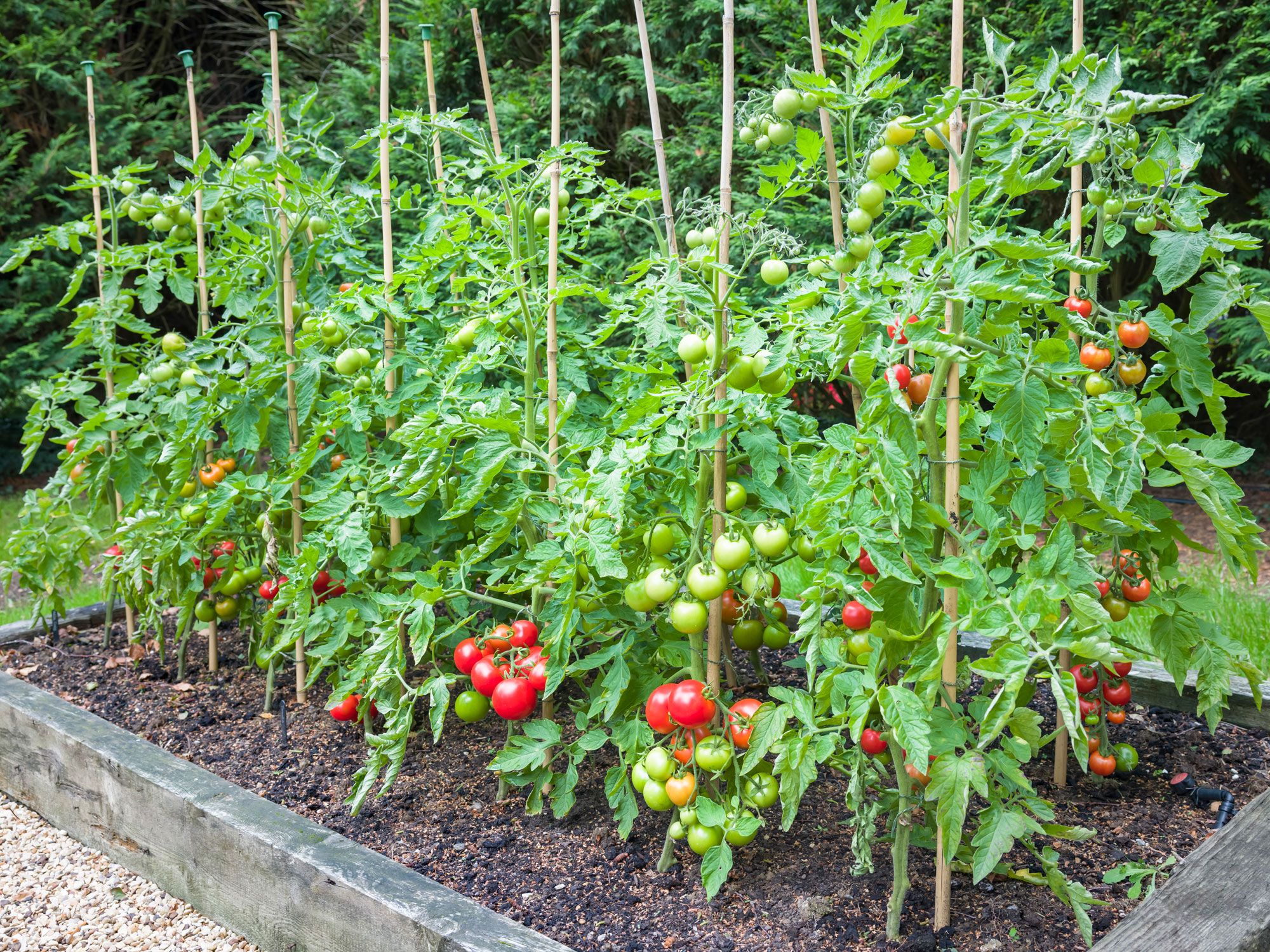
The first thing to point out is that correct tomato plant spacing depends on the variety you're growing. Tomato varieties are classified as determinate or indeterminate. Appropriate spacing of tomato plants depends on the growth habit of the variety and how they are trained, and allows for better air circulation and sunlight exposure for improved ripening.
Indeterminate tomatoes are the vining type, which have a longer growing season and give you a steady supply of tomatoes right through summer. In fact, they will keep on growing until it becomes too cold. They are also known as 'cordon' type tomatoes, which means they are grown on a single stem with trusses of fruit at regular intervals. They need support, which can be a stake, cane or a vertical string or wire. They also need pruning with the right gardening tools — which in turn will allow sunlight to ripen the fruits on the vine.
'Indeterminate varieties that are staked can be planted 1½ to 2 feet apart in the row,' according to the experts at the Extension and Outreach Department at Iowa State University. 'Indeterminate plants grown in wire cages should be spaced 2½ to 3 feet apart, while a 3- to 4-foot-spacing would be appropriate for indeterminate tomatoes allowed to sprawl over the ground.'
Determinate tomatoes are bush varieties that quickly reach mature height, produce a single harvest, then stop growing. They do not usually require pruning. These tomatoes grow to about 4 feet tall so they take up less space and make great container plants. 'Determinate tomatoes are small, compact plants that grow to a certain height, stop, then flower and set all their fruit within a short period of time,' according to the experts at Iowa State. 'The harvest period for determinate tomatoes is generally short. Determinate tomatoes can be planted 2 to 2½ feet apart. Rows should be spaced about 4 feet apart.'
Just when you think you've nailed the difference between the two types of tomato it's worth pointing out that some varieties of cherry tomato, for example, can be classed as determinate and some as indeterminate. If in doubt a good general rule to remember is to plant tomatoes a minimum of 2 feet apart.
Why correct tomato plant spacing is important
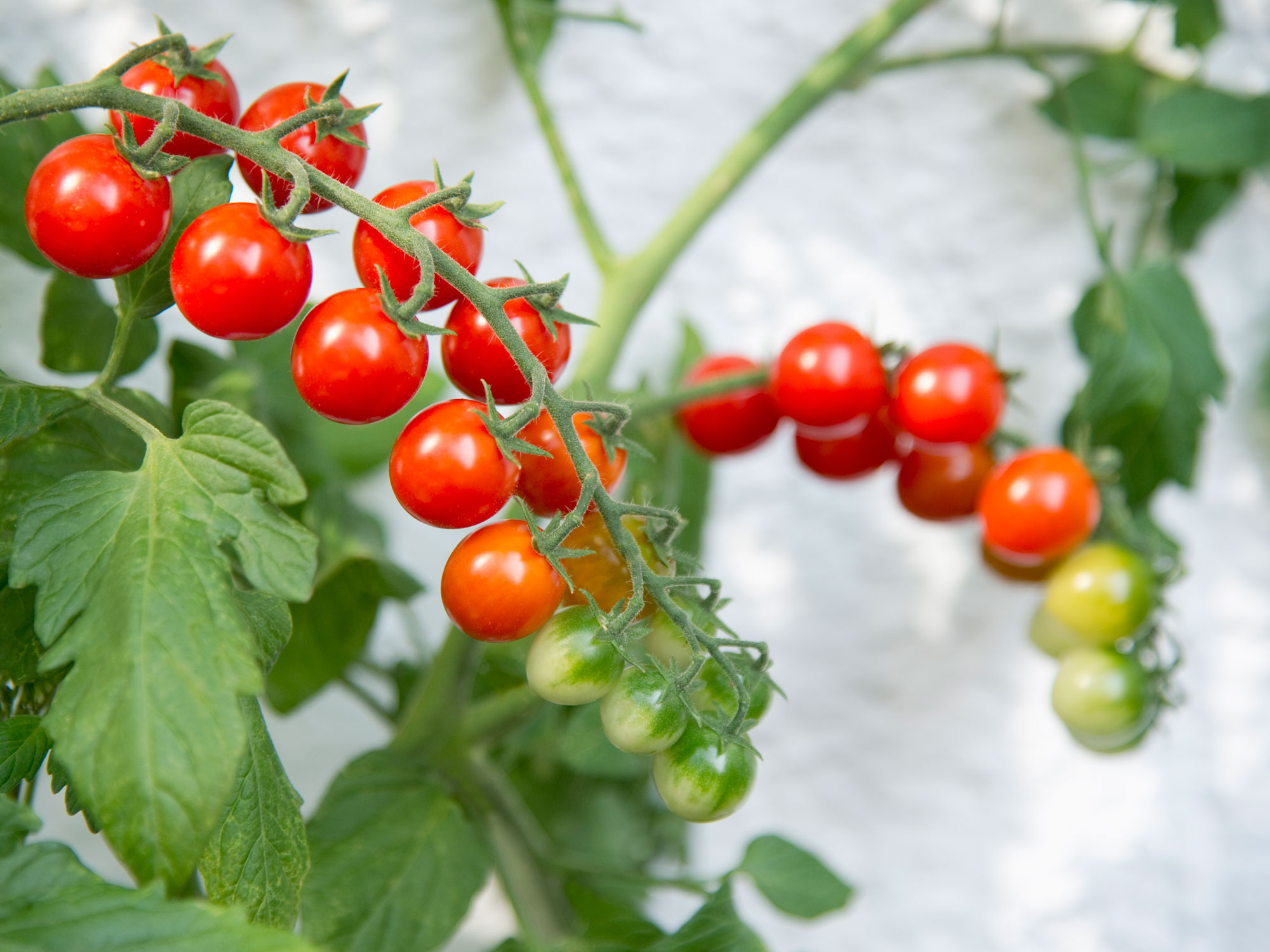
A common misconception is that the higher the crop density, the higher the yield you'll get. But the ideal spacing of tomato plants allows air circulation around the individual plants in the row. This prevents pests and disease taking hold on your precious plants. Good air flow stops the moisture build-up on leaves that can lead to problems such as bacterial or fungal diseases. This is because disease spreads quickly in humid conditions.
It's also a good idea to allow sunlight to penetrate all the leaves of your tomato plants especially the lower ones. This will give your plant the best chance for photosynthesis and healthy growth, and help it thrive. If plants don't get enough light as they are overcrowded they will develop scrawny and long branches that cannot support the crop, and flower clusters will take longer to form.
Additionally, suitable spacing of tomato plants means there is enough room for each one of these fast-growing plants to access sufficient nutrients from the surrounding soil without there being a rush on nutrients that will deplete the soil and mean that some plants miss out. 'A lot of research has gone into understanding how close you can space tomato plants and still expect good yields,' say the experts at University of California Agriculture and Natural Resources. 'While there's no consensus on an exact distance, especially considering the number of varieties of tomatoes out there and their relative sprawl, there is consensus that each plant needs space enough for light, air, and nutrients to grow.' Generous spacing between tomato plants is also important to allow access for pruning, weeding, feeding, watering and harvesting your crop, and may even leave room for companion plants for tomatoes which can help keep pests at bay.
What about spacing container grown tomato plants?

Whether your tomatoes are directly planted in the ground of your modern vegetable garden or growing in a container, spacing requirements are the same. The larger the container, the easier it will be to look after the plants. A deep window box or trough is ideal for spacing plants correctly, but there are options for growing in small spaces, like balconies, too. This self-watering 'tomato barrel' from Wayfair is perfect if you're short on space.
Compact bushy cultivars of cherry tomatoes are the easiest to grow in containers. Don't be tempted to plant several tomatoes in one pot unless it is huge. While they will survive in a crowded pot, you won't get such a good crop. 'Cherry tomatoes will give you the widest selection,' says gardening expert Maggie Stuckey, author of The Container Victory Garden. 'There are good possibilities for more compact varieties that are easily managed in containers.' Maggie also suggests looking out for grape cherry tomatoes like 'Ruby Crush'.
Remember too that container tomato plants will need watering more frequently during the hotter months of the year. It's also important to consider depletion of nutrients in the soil to ensure plants have enough nourishment.
Signs that your tomatoes are planted too closely together
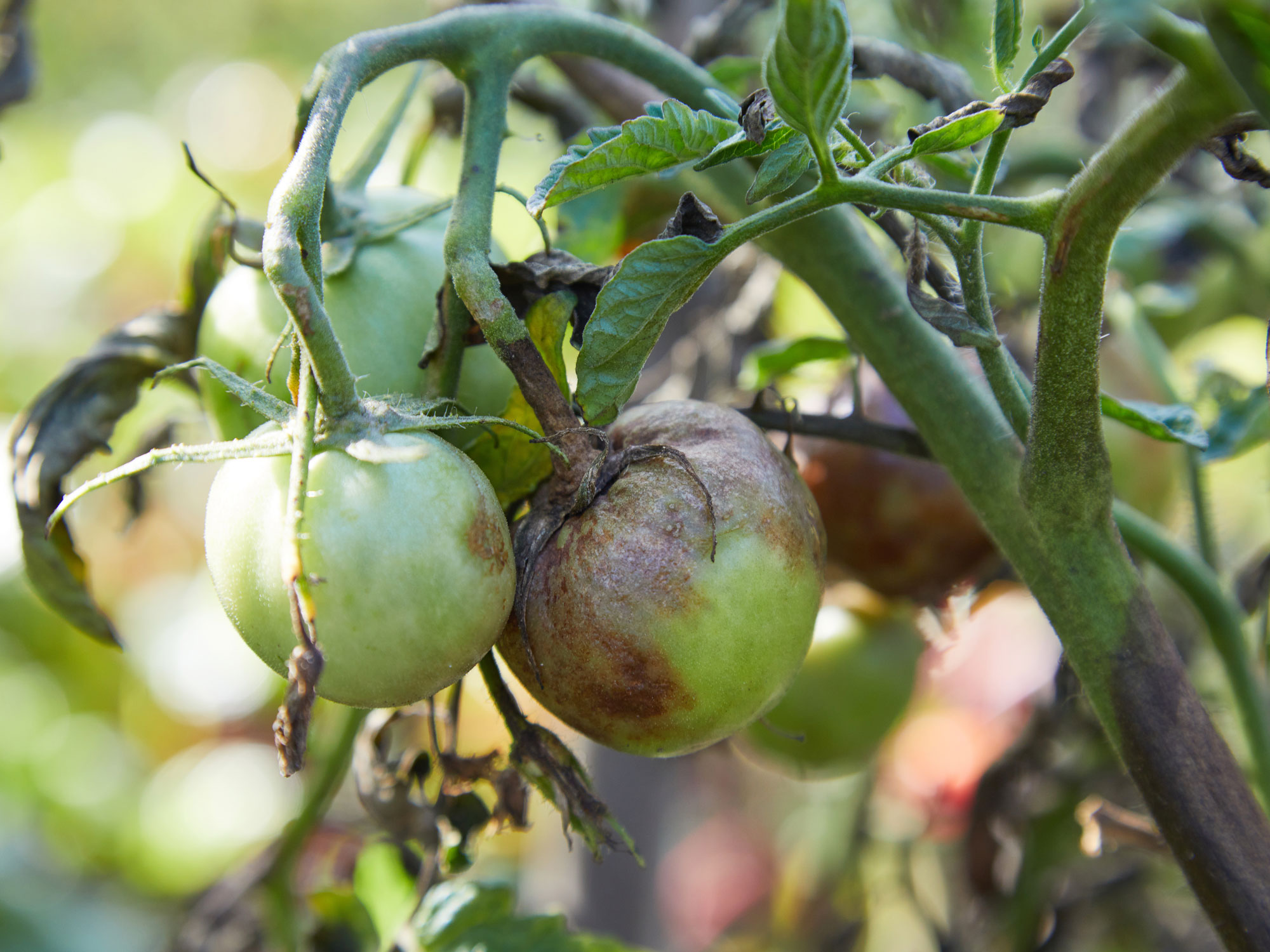
A tomato plant affected by root rot
Tomatoes tend to be prone to a whole range of diseases that can be the consequence of not following the guidance about spacing them correctly at planting stage. Plants that are crowded together with poor air circulation create the ideal conditions for diseases to spread. Ailing plants are often the first sign that something is amiss.
Proper spacing between plants is important to keep tomato plants healthy. If your tomatoes are planted too closely together they can be prone to common tomato plant diseases such as black mold and root rot, as well as tomato blight and viruses such as tomato mosaic virus. These thrive in moist environments, and can often be found in tomato plants that are planted too closely together. 'Blight on tomato plants can easily be recognized by leaves that develop brown spots on them and fruits that rot before they are ready for harvest,' says Resh Gala, who runs organic gardening business @hundredtomatoes and is author of Vegetable Gardening Made Easy. 'These fungal spores are exacerbated by humid conditions and spread very easily from one plant to another.'
Other common signs that your plants are too cramped include slow growth and poor tomato production as the plants are all competing for the same soil nutrients. If your tomatoes are failing and you realise that overcrowding is the problem you could try transplanting your plants but they will need extra close attention afterwards to ensure they survive the move.
But don't plant tomatoes too far apart either!
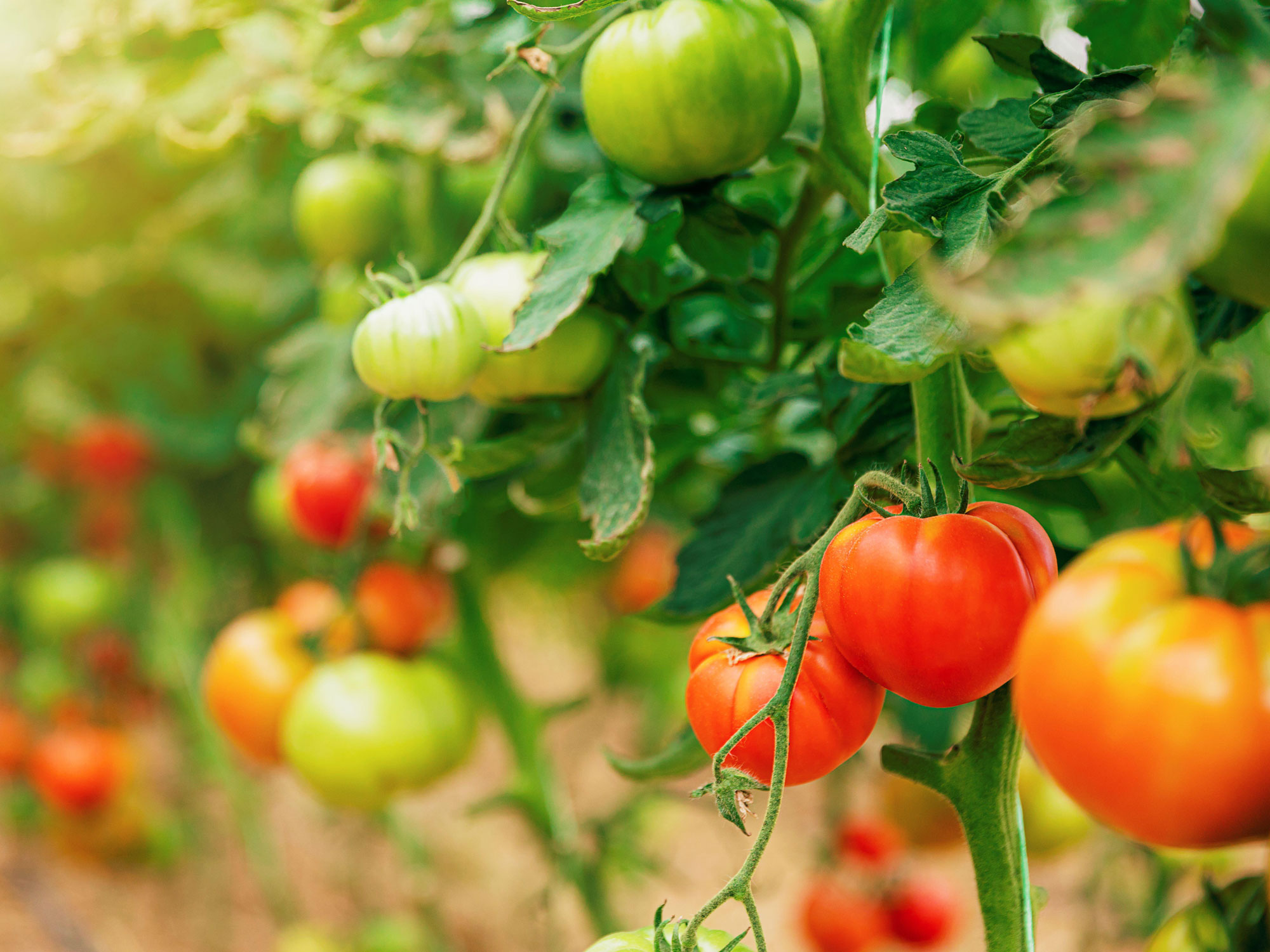
The advantage of having multiple tomato plants is to speed up the self-pollinating process as beneficial garden insects visit and move from plant to plant to cross pollinate them. So it's a good idea not to plant your tomatoes too far apart if you want them to be as productive as possible.
Remember, if in doubt it's a good idea to plant tomatoes further apart rather than closer together. There is no harm in giving them extra space, but too little space can result in a disappointing tomato crop. When considering how far apart to plant tomato plants remember the 'plant tomatoes a minimum of 2 feet apart' rule and all should be fine.
Our top 3 gardening books
Be The First To Know
The Livingetc newsletters are your inside source for what’s shaping interiors now - and what’s next. Discover trend forecasts, smart style ideas, and curated shopping inspiration that brings design to life. Subscribe today and stay ahead of the curve.
Lifestyle journalist Sarah Wilson writes about flowers, plants, garden design and trends. She has studied introductory garden and landscape design and floristry, and also has an RHS Level 2 qualification in the Principles of Plant Growth and Development. In addition to homesandgardens.com and livingetc.com she's written for gardeningetc.com, Real Homes, Modern Gardens and Country Homes & Interiors magazines. Her first job was at Elle magazine, during which time a trip to the beautiful La Colombe d'Or in St-Paul-de-Vence led to an interest in writing about all things botanical. Later as lifestyle editor at Country Homes & Interiors magazine the real pull was the run of captivating country gardens that were featured.
-
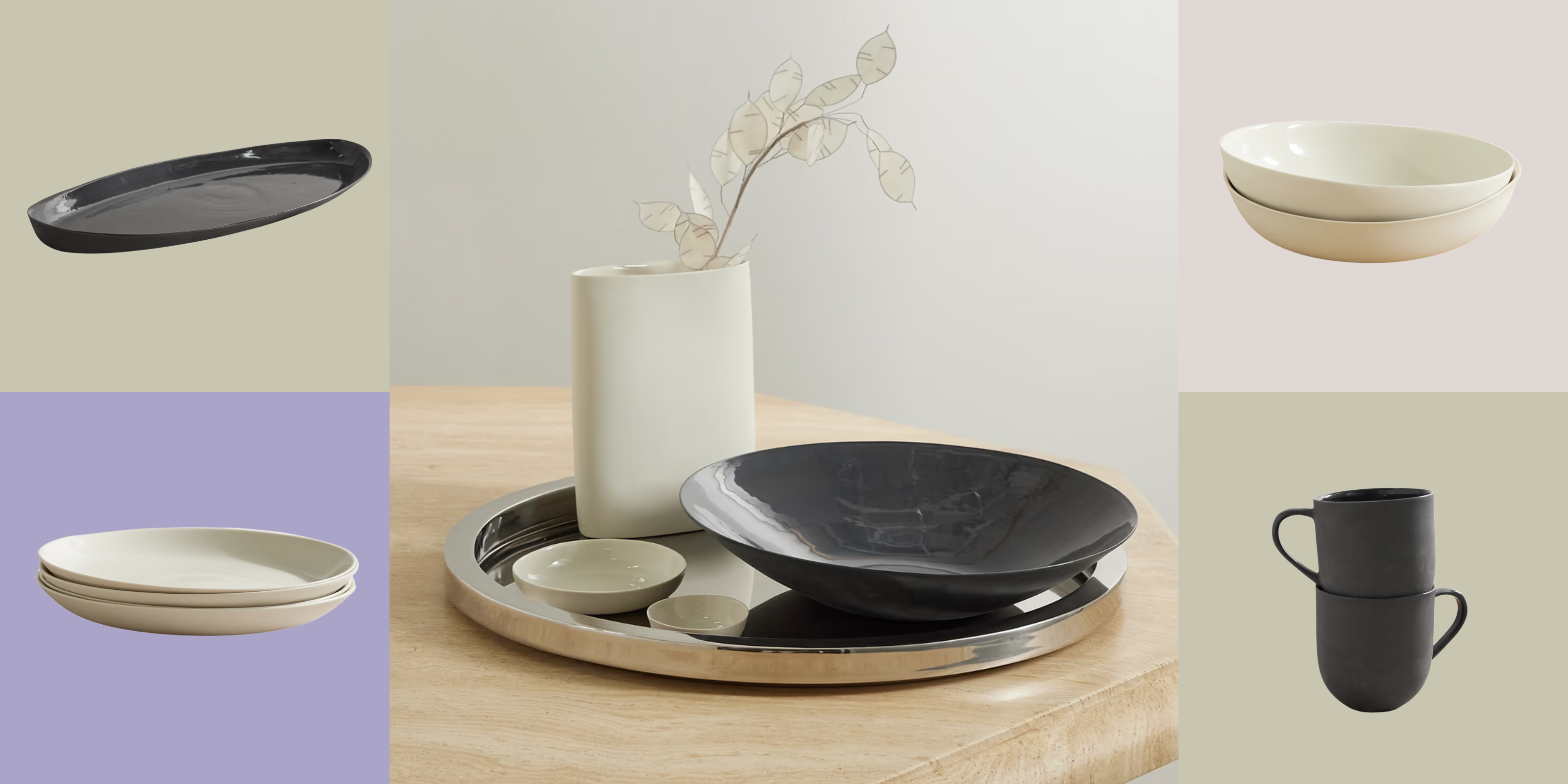 Turns Out, Sustainable Design Can Be Chic, and Net-a-Porter's 'Net Sustain' Curation Is Proof — Here's What I'm Shopping
Turns Out, Sustainable Design Can Be Chic, and Net-a-Porter's 'Net Sustain' Curation Is Proof — Here's What I'm ShoppingFrom the Net Sustain collection, Mud Australia's homeware is not only design-oriented, but eco-focused, too
By Devin Toolen
-
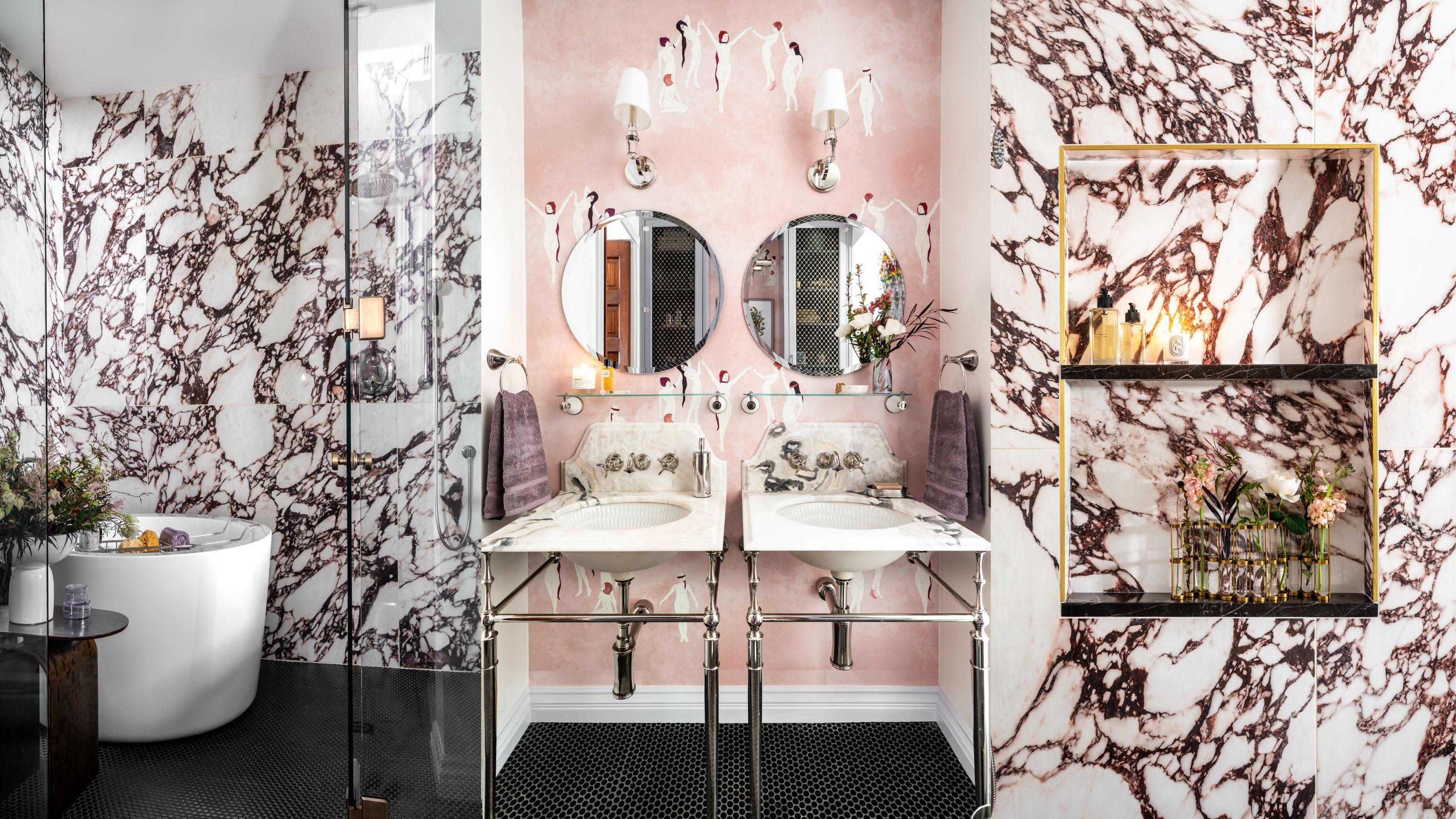 Before and After — How This Jewel-Box Bathroom Made the Most of Its Proportions With Maximalist Design and a 'Soaking Tub'
Before and After — How This Jewel-Box Bathroom Made the Most of Its Proportions With Maximalist Design and a 'Soaking Tub'This design offers a masterclass on creating a luxurious bathroom that is equally playful and elegant.
By Maya Glantz
